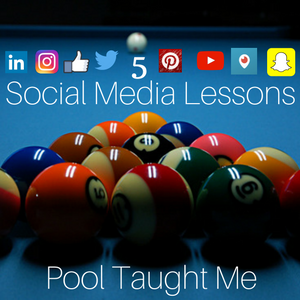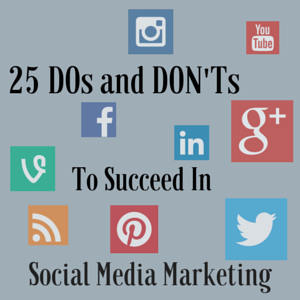
As a college student, I play pool for several hours in any given week. As I continued playing the game and working on my business, I realized that some tips for pool mirror ideal tips for growing and maintaining a social media audience.
It’s funny how any activity can teach you about business if you look at it the right way. You don’t need to be a pool player to understand the concepts within this blog post, but if you are a pool player, I’m sure you will appreciate this one.
#1: Start Strong
In a game of pool, the break typically determines how the rest of the game will go. Ideally, you want to break the triangle of pool balls and scatter the pool balls in different directions while landing some in the pockets (or if you land the 8 ball on the break, you win).
A bad break means the game will last far too long while a good break allows for a more fun game.
Each day, when you start implementing your social media strategy, the way you start determines the rest of the journey. If you start off distracted by the trending topics section, you will remain distracted for most of the day.
The way you start impacts the rest of your journey.
#2: Stay Consistent
A pool player who has a great day on one day and a bad day on another is not reliable. The best pool players are the ones who are consistently good.
In the same way, social media growth requires consistent work to see the results. You can’t grow your Twitter audience on one day, take a day off on the other day, and repeat that pattern while expecting massive results.
Staying consistent is one of the most important parts of thriving on social media. The more consistent effort you put into your social media strategy, the better your results will become.
#3: Get Advice From Others
When I got into college, I had no pool experience. I was terrible. I only became good after I got some guidance from others.
Getting advice from others sounds like common sense, but common sense is rarely common practice. Some people are intimidated to come up to someone or send an email to someone asking for advice.
When I got started on my social media journey, I had tons of questions. I was not afraid to ask people how they grew massive social media audiences. They responded by offering me their advice.
This advice was critical for me growing my social media audience. Don’t be afraid to ask others for advice. You’ll accomplish more in a shorter amount of time just by asking the right people the right questions.
#4: Focus On One Social Network
When the 8 ball is all alone on the table, you must call your shot before sinking the 8 ball into a pocket. It’s impossible to call multiple pockets. You must choose one and focus on only sinking the 8 ball into the chosen pocket.
If you look at other options, you risk hitting the 8 ball wrong and landing it into the wrong pocket. You can do all of the work to get the other seven balls off the table, but if you don’t focus on the best pocket for the 8 ball, you risk landing it in the wrong pocket.
Many social media experts start their social media journeys by focusing on one social network. Once they master their first social network, they then expand into other social networks.
I started by mastering Twitter and then I expanded into the other social networks. Foundr Magazine grew a massive presence on Instagram and then expanded into the other social networks.
Choose one social network and master it. It’s easier to walk with one egg in your hand than walk while juggling 10 eggs. Most people approach social media like the person who juggles the 10 eggs (without being a professional juggler).
#5: Set Yourself Up For The Next Opportunity
When you have an easy shot in a game of pool, you need to do two things simultaneously. You must both make the easy shot in and set yourself up for a next shot. The next shot you want to set yourself on determines how you hit the cue ball and how hard you hit it.
Think about everything you do for your social media strategy. What type of work can you do now that can set you up for more success in another area within the near future? Growing a social media audience sets you up for several opportunities.
If you share your blog posts and landing pages on your social networks, then expanding your social media audience sets you up for more blog traffic and a bigger email list.
Don’t just invest your time (and for some, money) for the sake of building your numbers. Do so with an end goal in mind. What is the purpose of you using social media? Why do you bother to grow an audience?
Always think about how your actions in one area can set you up for the next opportunity. Still focus on the opportunity you are currently pursuing, but have that other opportunity in the back of your mind.
In Conclusion
Any activity presents itself as a learning experience you can use to take your business to the next level. In this case, playing pool taught me new things about social media.
I knew some of these lessons before, but with the new context, I am more conscious of how these lessons apply to a social media strategy.
For instance, I was promoting my blog posts and landing pages on social media long before I started to play pool. However, I never thought of the concept of setting up for the next opportunity.
If growing on social media sets you up for the opportunity of more blog traffic, what opportunity do you set yourself up for once you get visitors? Do you set up for leads? Product sales? Clients? Always anticipate the next opportunity and set yourself up for it.
If you are a business owner, you can make each phase of the customer cycle set up for the next phase of the customer cycle. That’s what the most effective autoresponders do. When a customer buys a low-priced product, they eventually get the pitch for the high-priced product.
Are you a pool player? Which of these lessons landed in the pocket for you? Have any other lessons you’d like to put on the table? Break in the comments section below.


